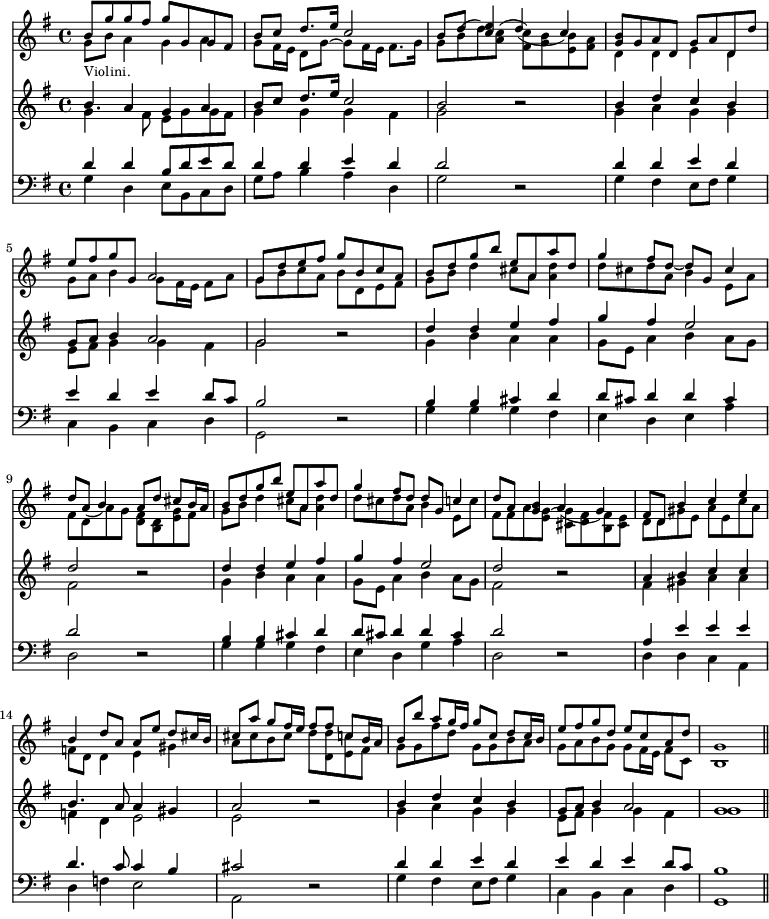proper persons; a double Chorus, sometimes of Disciples, and sometimes of raging Jews, treated always in the Dramatic form; certain Airs and Choruses, called at the time they were written Soliloquies, containing Meditations on the events narrated; and a number of Chorales, in which the general Congregation was expected to join. It is impossible to say which of these different classes of Composition displays the greatest amount of genius or learning. The part of the Evangelist, and the Recitatives assigned to our Lord and His Apostles, are full of gentle dignity. The Choruses, though not fugal, abound with superb and exceedingly intricate part-writing, and are, moreover, marked by an amount of dramatic power extremely remarkable in a Composer who never gave his attention to pure dramatic Music: the last one in particular, 'Ruhet sanfte, sanfte ruh't,' is a model of touching and pathetic expression. The Airs are always accompanied in as many real parts as there are Instruments in the Score, and consequently exhibit as much contrapuntal ingenuity as the Choruses. Finally, the Chorales are treated with a depth of feeling to which Bach alone has ever attained in this peculiar style of composition. In the Christmas Oratorio, though the general conformation is very similar, the dramatic element is much less plainly brought forward. The work is divided into six portions—one for each of the first six days of the Christmas Festival; but it may quite as conveniently be divided into three for general performance. The Second Part begins with a Symphony, in 12-8 time, and of Pastoral character, second only in beauty to the 'Pastoral Symphony' in the Messiah. The Choruses are much more elaborately developed than those of the Passion, with more frequent points of Imitation, and very much less dramatic effect. But in the Chorales the treatment is exactly the same as in the two Passion Oratorios, and we cannot doubt that, in all these cases the Congregation sang the Melody, while the Chorus and Orchestra supplied the simple and wonderfully beautiful harmonies with which it is adorned. We can scarcely illustrate our remarks upon these Oratorios—the invaluable productions of the Fifth and Sixth Periods—better than by subjoining Chorales from Handel's 'Johannis Passion,' Graun's 'Tod Jesu,' and Bach's Passion according to S. Matthew.
- ↑ We have omitted the introductory and concluding symphonies from want of space.

